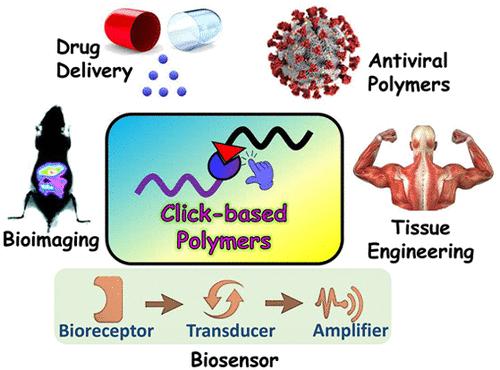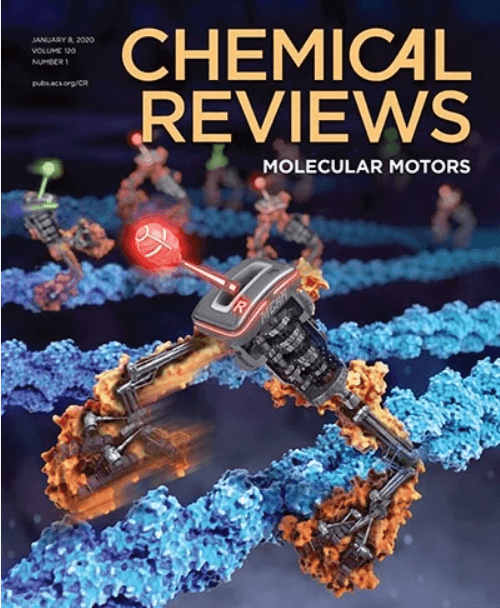Click Chemistry for Biofunctional Polymers: From Observing to Steering Cell Behavior
IF 51.4
1区 化学
Q1 CHEMISTRY, MULTIDISCIPLINARY
引用次数: 0
Abstract
Click chemistry has become one of the most powerful construction tools in the field of organic chemistry, materials science, and polymer science, as it offers hassle-free platforms for the high-yielding synthesis of novel materials and easy functionalization strategies. The absence of harsh reaction conditions or complicated workup procedures allowed the rapid development of novel biofunctional polymeric materials, such as biopolymers, tailor-made polymer surfaces, stimulus-responsive polymers, etc. In this review, we discuss various types of click reactions─including azide–alkyne cycloadditions, nucleophilic and radical thiol click reactions, a range of cycloadditions (Diels–Alder, tetrazole, nitrile oxide, etc.), sulfur fluoride exchange (SuFEx) click reaction, and oxime-hydrazone click reactions─and their use for the formation and study of biofunctional polymers. Following that, we discuss state-of-the-art biological applications of “click”-biofunctionalized polymers, including both passive applications (e.g., biosensing and bioimaging) and “active” ones that aim to direct changes in biosystems, e.g., for drug delivery, antiviral action, and tissue engineering. In conclusion, we have outlined future directions and existing challenges of click-based polymers for medicinal chemistry and clinical applications.

点击化学生物功能聚合物:从观察到指导细胞行为
点击化学已经成为有机化学、材料科学和聚合物科学领域最强大的构建工具之一,因为它为高产合成新材料和简单的功能化策略提供了无障碍的平台。由于没有苛刻的反应条件或复杂的后续处理程序,新型生物功能聚合物材料得以快速发展,如生物聚合物、定制聚合物表面、刺激响应聚合物等。在这篇综述中,我们讨论了各种类型的咔嗒反应──包括叠氮化物-炔环加成反应、亲核反应和自由基巯基咔嗒反应、一系列环加成反应(Diels-Alder、四唑、氧化腈等)、氟化硫交换(SuFEx)咔嗒反应和肟-腙咔嗒反应──以及它们在生物功能聚合物形成和研究中的应用。接下来,我们讨论了“点击”生物功能化聚合物的最先进的生物应用,包括被动应用(例如,生物传感和生物成像)和旨在指导生物系统变化的“主动”应用,例如,药物输送,抗病毒作用和组织工程。最后,我们概述了基于点击的聚合物在药物化学和临床应用中的未来方向和存在的挑战。
本文章由计算机程序翻译,如有差异,请以英文原文为准。
求助全文
约1分钟内获得全文
求助全文
来源期刊

Chemical Reviews
化学-化学综合
CiteScore
106.00
自引率
1.10%
发文量
278
审稿时长
4.3 months
期刊介绍:
Chemical Reviews is a highly regarded and highest-ranked journal covering the general topic of chemistry. Its mission is to provide comprehensive, authoritative, critical, and readable reviews of important recent research in organic, inorganic, physical, analytical, theoretical, and biological chemistry.
Since 1985, Chemical Reviews has also published periodic thematic issues that focus on a single theme or direction of emerging research.
 求助内容:
求助内容: 应助结果提醒方式:
应助结果提醒方式:


